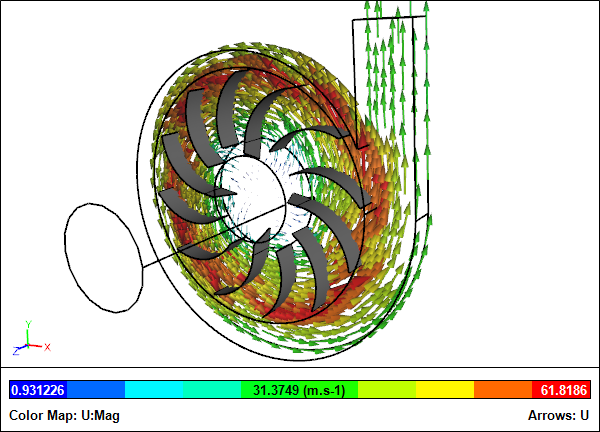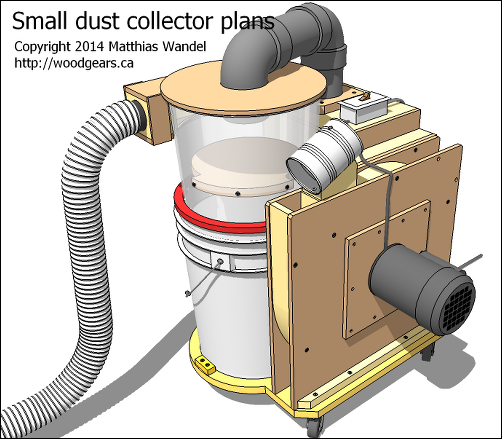
CFD Analysis of a Blower for a Small Dust Collector
I recently came across an interesting fluid dynamics project modestly titled "Small Dust Collector" by Matthias Wandel of Woodgears. The unusual twist - at least from my metal-orientated view of the world - was the use of wood as the primary construction material. The project includes the construction of a blower, cyclone, filter housing, and filter manifold - all prime candidates for Computational Fluid Dynamics (CFD) simulations. I sense a series of blog posts, so first let's take a look at the blower also known as a centrifugal fan or squirrel cage fan.
 CFD Simulation of a Blower
CFD Simulation of a Blower
3D Model Construction
Within the plans Matthias sells online for a very reasonable US$15 are detailed descriptions of each component along with supporting SketchUp files.
 Small Dust Collector SketchUp Model
Small Dust Collector SketchUp Model
Using these plans for the blower I constructed a 3D model from scratch. To simplify the simulation and reduce the need to resolve narrow edges I used zero-thickness faces for the blades and blade-tip-disks. All the other geometry, including the spiral cavity, was constructed according to the original specifications.
 Blower CFD Model
Blower CFD Model
Performance Test
I thought it would be interesting to determine the performance characteristics of the blower, so I ran a series of 30 simulations for a range of volume flow rates and measured the pressure rise across the blower along with the torque to maintain each condition. Given these measurements I could determine the fan curve and efficiency.
 Blower Fan Curve
Blower Fan Curve
 Blower Torque Curve
Blower Torque Curve
 Blower Efficiency Curve
Blower Efficiency Curve
Summary
The results from this study show that the peak efficiency for this blower is 49%, at a pressure rise of 2720 N/m2 (to match a pressure drop of equal magnitude due to the resistance of constituent fluid components), which results in a volume flow rate of 0.085 m3/s. While these results may not exactly match the measured characteristics of the as-built device, they should be in the right ballpark.
Flow Visualization
 Pressure Iso-SurfacesBlower CFD simulation for 0.085 m3/s
Pressure Iso-SurfacesBlower CFD simulation for 0.085 m3/s
 Velocity Magnitude Iso-SurfacesBlower CFD simulation for 0.085 m3/s
Velocity Magnitude Iso-SurfacesBlower CFD simulation for 0.085 m3/s
 Velocity ArrowsBlower CFD simulation for 0.085 m3/s
Velocity ArrowsBlower CFD simulation for 0.085 m3/s
Notes
The fixed speed for the blower was 3500 RPM.
The blower geometry was created in Caedium Professional. The CFD simulations were automated using a Python script and were performed using the incompressible, steady-state RANS solver, with a MRF for the rotor, and the k-omega SST turbulence model.
Check out Matthias' craftsmanship and ingenuity in his video on the construction of the blower for his small dust collector.
Small Dust Collector Blower Construction
Recent blog posts
- CFD Simulates Distant Past
- Background on the Caedium v6.0 Release
- Long-Necked Dinosaurs Succumb To CFD
- CFD Provides Insight Into Mystery Fossils
- Wind Turbine Design According to Insects
- Runners Discover Drafting
- Wind Tunnel and CFD Reveal Best Cycling Tuck
- Active Aerodynamics on the Lamborghini Huracán Performante
- Fluidic Logic
- Stonehenge Vortex Revealed as April Fools' Day Distortion Field
